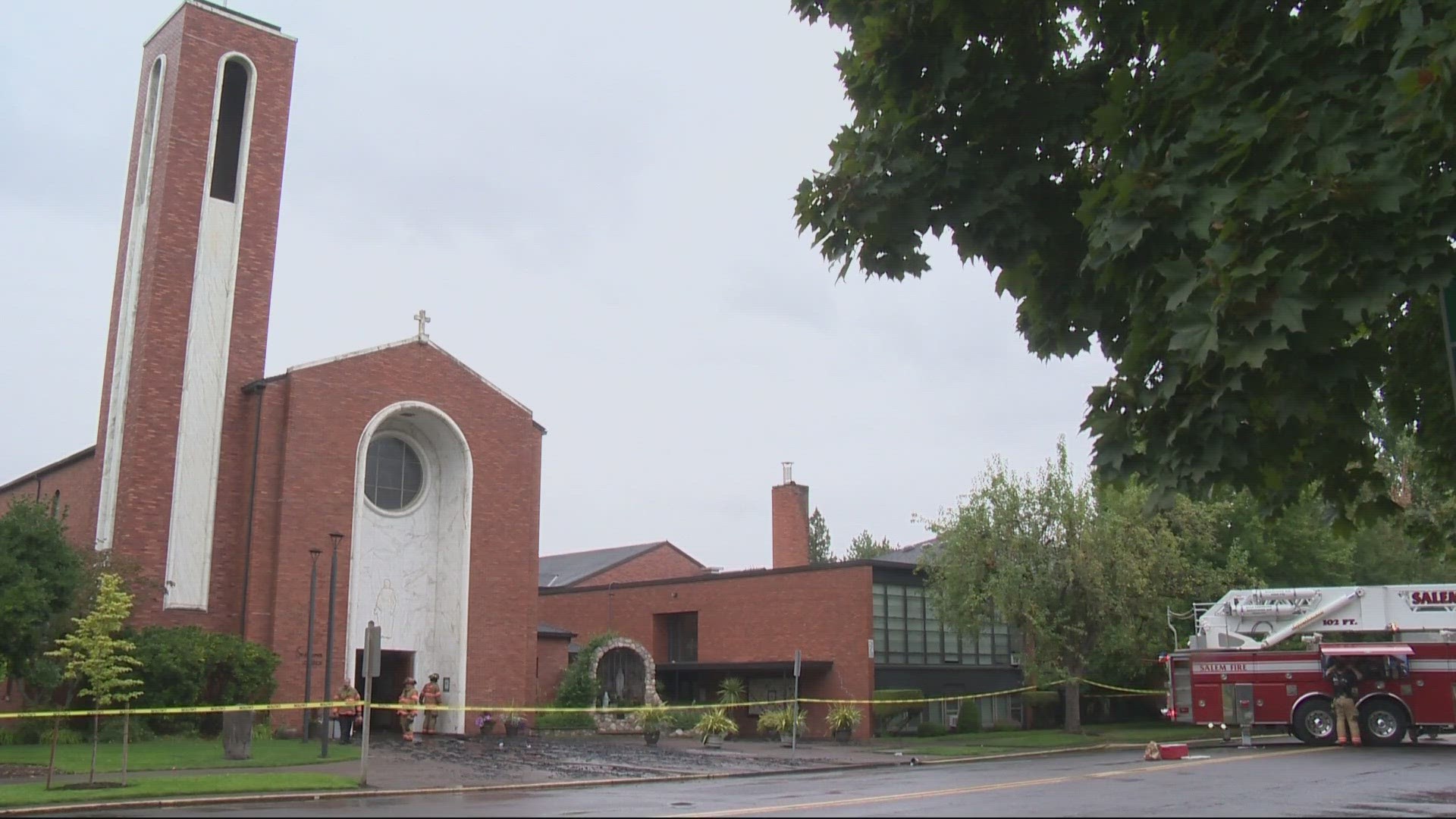The case of the "Grandpa Bandit" made Paige Clarkson realize the addictive power of opioids..
When she first became a prosecutor, Clarkson, a Marion County deputy district attorney, heroin- and opioid-related crimes were relatively rare.
But 10 years ago, an older Oregon man started robbing small, mom-and-pop pharmacies.
The man would hit pharmacies along the Interstate 5 corridor. He'd walk inside the business, go straight to the drug counter, hold his hand in his jacket pocket like a weapon and demand all the pharmacy's Vicodin.
He gave his victims to the count of 10 to give him all their painkillers. He robbed about seven pharmacies, including two in Marion County, before he was captured.
With each robbery, he left a wake of traumatized victims who thought they'd die if they didn't get him the drugs fast enough, Clarkson said.
Upon his capture, the "Grandpa Bandit" readily agreed to plead guilty to all charges against him. Clarkson said he didn't match the typical drug user seen in Marion County. He had an accomplished career and a large family. He coached his grandchildren's baseball games and owned several properties.
"He was your neighbor," she said. "He was my neighbor."
He was prescribed Vicodin after getting into a car crash and became addicted to the painkiller. When his doctor cut him off, he began robbing pharmacies.
"That was how I knew that we had an opioid problem in Marion County," she said.
Story all too common
Marion County Sheriff Jason Myers said 15 years ago, he would rarely see heroin in the community.
"Now, I could tell you of pastors, of student-athletes, of next-door neighbors who ended up in the same place as this Grandpa Bandit," he said.
Clarkson and Myers spoke before a crowd at the Salem City Club Friday. The event, titled "America's Opiate Epidemic: Is it in Salem and what's being done about it?", proved to be timely.
Only a day earlier, President Donald Trump declared the opioid epidemic a public health emergency.
The epidemic claimed 64,000 American lives in 2016, hitting both rural and urban areas, killing the rich and the poor, Trump said.


Related spikes in crime
For years, prosecutors and officers in Oregon heard horror stories from their East Coast colleagues, Clarkson said. They learned about cities in Pennsylvania reporting 35 drug-related deaths in one week and of ambulance crews in New Jersey struggling to keep up with overdose calls.
"This is a cautionary tale for us," she said.
The once rare heroin-related calls now have become more commonplace in Marion County.
Clarkson said they are seeing more overdoses, more prescription medicine abuse and more reports of fentanyl-laced drugs.
"We know it's coming," she said. "We know the patterns are there."
It is up to leaders, law enforcement and the community to decide how to fight the epidemic, Clarkson added.
Spikes in violent crimes like homicide and robbery tend to follow spikes in drug addiction, as do increases in property crimes. Myers said addicts will often commit identity theft, burglaries and theft to fund their drug habits.
"We know this could bring a criminal crisis," Clarkson said.
In the past, the tough-on-crime "War on Drugs" approach would often lead to jail time and felony convictions for those struggling with addictions.
She said using the criminal justice system to treat a public health problem like addiction has proven to be expensive and ineffective.
"What we've learned — and it's taken us a little bit of time in law enforcement — is that we can't arrest our way out of homelessness, we can't arrest our way out of mental illness and we can't arrest our way out of addiction," Myers said.
A new approach
Public safety is the top priority for prosecutors and law enforcement. Criminal convictions are often the best option for keeping communities safe and holding people accountable.
Sometimes, however, convicting people struggling with a public health issue like addiction can worsen the problem, Clarkson said. Convictions and incarceration can be a barrier to housing, employment and keeping families together.
"As law enforcement officials, we really need to question ourselves and ask: Do we need to convict that person to solve the problem?" Clarkson said.
Or, she asked, are there other resources, like housing and treatment, that could be used to actually address the root of the problem.
Instead of being a barrier, law enforcement can serve as a bridge to these resources, Myers said.
They can catch people "upstream" and get them into treatment before they fall too deeply into addiction, as well as working with health services to help chronic, "downstream" addicts.
This different approach will be costly, Clarkson said. Funding is sorely needed for transitional housing, Naloxone for overdoses, public education, treatment and a sobering center, which the greater Salem area does not have.
But by keeping people out of jail, away from the cumbersome criminal justice system and involved in the community, the measures could ultimately be cost-saving, Clarkson said.
"This is a community effort," Myers said. "It takes all us working together. At the end of the day... we probably all know somebody in our family that either suffers from a mental health condition or an addiction."
For questions, comments and news tips, email reporter Whitney Woodworth at wmwoodwort@statesmanjournal.com, call 503-399-6884 or follow on Twitter @wmwoodworth
By the numbers
From 2012 to 2016, 66 opioid overdose deaths were reported in Marion County.
During the same time period, 15 overdose deaths were reported in Polk County.
An average of three Oregonians die every week from a prescription drug overdose.
The most common prescription drugs involved in overdoses include:
- Methadone
- Oxycodone
- Hydrocodone
In 2013, one in four Oregonians received a prescription for opioid medications.
In 2015, Oregon ranked #2 among states for non-medical use of pain relievers.



